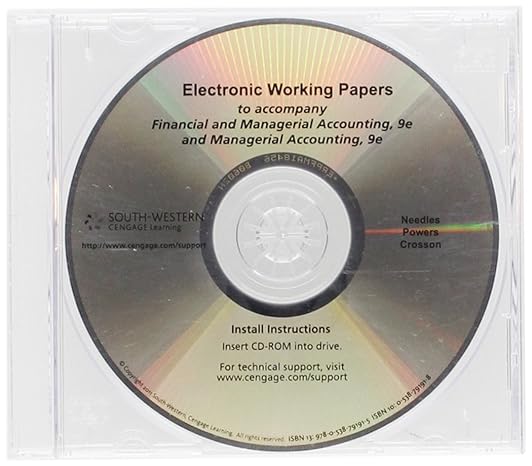Question
Question 1 (1 point) True or False: For activity-based costing to be successfully implemented, it is ideal to establish homogeneous cost pools. True False Question
Question 1 (1 point)
True or False: For activity-based costing to be successfully implemented, it is ideal to establish homogeneous cost pools.
True
False
Question 2 (1 point)
If activity-based costing is used, insurance on the plant would be classified as a ________.
| a | unit-level activity. |
| b | batch-level activity. |
| c | product-level activity. |
| d | facility-level activity. |
Question 3 (1 point)
True or False: In a traditional volume-based costing system, a low-volume, relatively more complex product is likely to suffer from cost distortion.
True
False
Question 4 (1 point)
True or False: In activity-based costing, a plant-wide overhead rate is used to apply overhead to products.
True
False
Question 5 (1 point)
True or False: In a manufacturing company employing ABC for a number of units produced, setups of machinery would be classified as a batch-level activity.
True
False
Question 6 (1 point)
Products might consume overhead in different proportions due to ________.
| a | differences in product size |
| b | differences in setup times |
| c | differences in product complexity |
| d | all of the above |
Question 7 (1 point)
A(n) _______________ system first summarizes overhead costs in pools then attributes to drivers in order to develop an allocation rate.
| a | direct costing |
| b | variable costing |
| c | traditional costing |
| d | activity-based costing |
Question 8 (1 point)
More accurate product costing information is produced by assigning costs using ________.
| a | volume-based, plant-wide rate |
| b | volume-based, departmental rates |
| c | activity-based pool rates |
| d | all of the above |
Question 9 (1 point)
The use of unit-based activity drivers to assign costs tends to ________.
|
|
|
| a | overcost low-volume products. |
| b | overcost high-volume products. |
| c | undercost all products. |
| d | overcost all products. |
Question 10 (1 point)
Production-cost cross-subsidization results from ________.
| a | allocating indirect costs to multiple products |
| b | assigning traced costs to each product |
| c | assigning costs to different products using varied costing systems within the same organization |
| d | assigning broadly averaged costs across multiple products without recognizing amounts of resources used by which products |
Step by Step Solution
There are 3 Steps involved in it
Step: 1

Get Instant Access to Expert-Tailored Solutions
See step-by-step solutions with expert insights and AI powered tools for academic success
Step: 2

Step: 3

Ace Your Homework with AI
Get the answers you need in no time with our AI-driven, step-by-step assistance
Get Started


